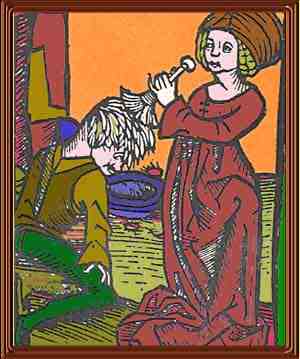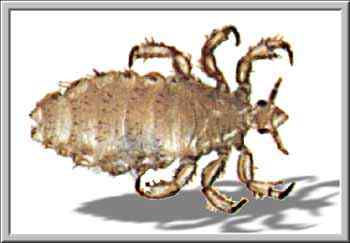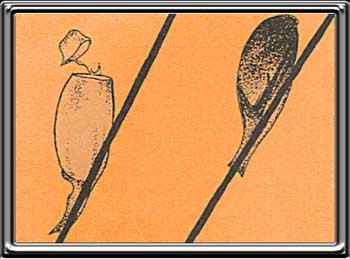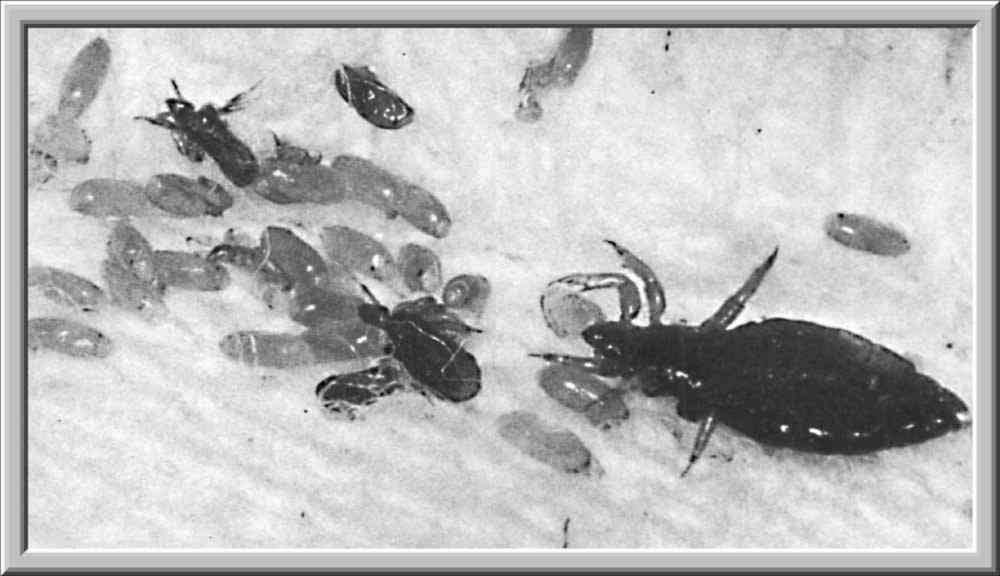If you are like me...55 years old going on 21 then you may remember the old "Biddy Rake" a specialist comb for removing head lice eggs (have a look at the picture below when I was in my youth, 16th century) from your hair, yes that's right we're going on to
LICE

Sucking lice belong to the Order Anoplura and the members of this small insect group show many adaptations for their specialised parasitic life. They are wingless, have much reduced eyes and their mouth parts are adapted for biting and sucking. The skin of a louse is leathery and greyish, and the abdomen becomes much distended when full of blood. Each leg ends in a claw which is adapted for gripping hairs. Lice feed exclusively on blood and as they have to feed twice a day if they are to remain in good condition they can only survive for a few days in the absence of a host. A louse that is really hungry may be so greedy when it does again find a host that it will feed until it literally almost bursts. Lice are completely dependant upon the special micro climate found near the surface of the skin. If the temperature changes as, for example, when the host has a fever, they will move away, and in former times it was considered a very bad sign when lice left their host. Lice also move off very quickly from a cold, dead person and this naturally increases the risk of infection during epidemics.A female louse lays about 10 eggs per day during it's month of life. The eggs are quite large and a yellowish - white and so firmly attached that it is practically impossible to remove them. After about a week the egg is ready to hatch and the young louse inside inflates itself with air, pushes off the top of the egg and crawls out. The newly hatched louse starts to feed immediately and after about 8 days is ready to mate and lay eggs. A population of lice that is left undisturbed can therefore increase at a fast rate.
Lice are by no means a new problem, most mammals harbour their own special species and there is no doubt that our primate ancestors also harboured them. It is, in fact, probable that the louse now found on modern man is the same or closely related to the species that infested early man. In most periods of history lice have been regarded as something that one lived with, and the job of delousing one another was an important part of family life.
Two types of louse are adapted for living on man: the human louse, and the crab louse. The human louse occurs in two forms, the body louse and the head louse, and these are very similar to one another. In fact they can only be distinguished with certainty by their habits. The body louse is Pediculus humanus (var. corporis) and the head louse is Pediculus humanus (var. capitis)

(The Human Body Louse)
Found only on the body and in clothing, the body louse lays its eggs in the seams of underclothing and similar sheltered places. It is somewhat hardier than the head and at 23°C it can live for 4 days without access to blood. The best conditions for the spread of these lice are when humans are living close together in primitive conditions. They do not thrive amongst people who maintain a good standard of hygiene with frequent washing and changing of clothes. Body lice are important as vectors of typhus fever, trench fever and louse borne relapsing fever. In populations where these diseases do not occur, the only effect of louse bites is the resultant annoying irritation.
The picture above shows body lice with eggs which have been laid in underclothing.....
The head louse, which looks the same as the body louse, attaches its eggs firmly to hairs close to the scalp. The eggs are extremely tenacious and can only be removed by using a fine comb and much effort. Even frequent washing of the hair may not be sufficient to remove them. The empty egg shells remain on the hair and move outward as it grows. Under a lens they can be distinguished from unhatched eggs because they are more transparent and the lid is missing (see picture below). As already mentioned, lice require a blood meal twice a day, and at ordinary room temperatures a head louse can only survive a couple of days when not living on a human. Head lice do not transmit diseases. They can be controlled by special preparations, but these do not kill the eggs, so treatment needs to be repeated several times at intervals of 4 - 5 days.

